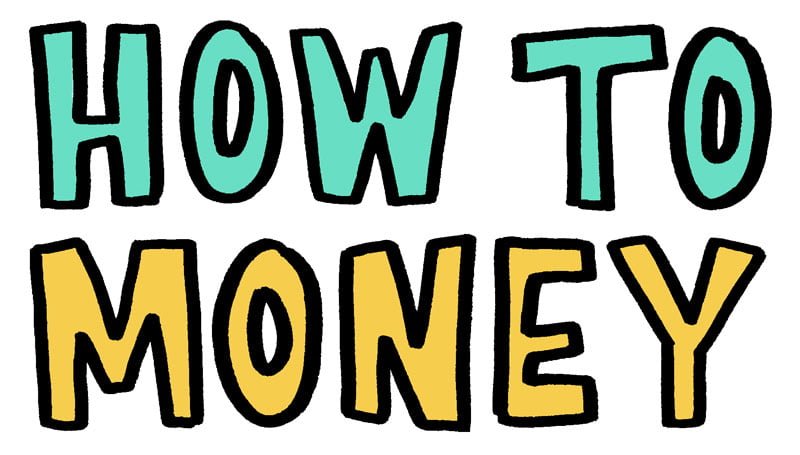Debt is a tricky thing. It can either be tremendously good for your finances or it can wreak havoc on your life. With so many fancy financing options these days, how can you tell whether taking on debt is good for you or bad? More specifically it’s important to note that the debt we accrue can evolve on us. We need to discuss when good debt can become bad debt.
First, let’s recap the main difference between good debt and bad debt. Then we’ll talk about how and when each of these can cross over to become the other.
Good debt vs. bad debt
There are 2 common ways people determine good debt vs. bad debt. The first is by simply identifying what the debt is used for…
Good debt: A loan used to buy something that appreciates in value. For example, a mortgage used to buy a house or student loan debt to improve your lifetime earnings.
Bad debt: A loan used to buy things that depreciate in value. For example, taking out a car loan to buy a brand new souped-up Audi R8.
The other method people use to distinguish between good and bad debt is by using a “6% rule of thumb”…
Good debt: Any loans with interest rates under 6% are considered good.
Bad debt: Loans with interest rates over 6% are considered bad.
The gray area…
The problem is that those lines aren’t hard and fast. They can get blurred. Sometimes these definitions clash against each other!
For example, if someone took out a mortgage with an 8% interest rate, is this considered good or bad debt? Many people would say this is good debt, because it’s financing a real estate asset that appreciates in value over time. On the flip side, it could also be considered bad debt, because it doesn’t meet the 6% rule of thumb.
As you can see, it’s not so cut and dry. In addition, there are several external factors that come into play, many of which are specific to an individual’s personal money situation.
Now, let’s run through some real life examples that illustrate when good debt becomes bad debt (and vice versa).
Related: Ways to pay off your mortgage early
When good debt becomes bad:
Here are 4 scenarios that will show you how different factors can redefine whether a specific debt is good or bad for your overall financial life…
1) Over-leveraging
It’s possible to have too much of a good thing, right? One glass of wine can be delightful. Ten will leave passed out on the couch. In the same way, too much good debt can be bad for you as well. This happens when you borrow too much money and don’t account for fluctuating asset values.
For example, it’s a common belief that real estate always appreciates in value. That might be true over the long haul, but in the short term housing prices tend to fluctuate up and down.
Imagine someone purchasing a rental property with a 10% down payment and then financing 90% of the home’s value… Things start out fine, but then after a few months let’s say there’s a 15% downturn in the real estate market. All of a sudden, this person now owes more money than what their property is actually worth!
Now envision this same scenario with two rental properties. Or heaven forbid five! A small-ish market downturn could put all of these properties underwater, creating a potential catastrophe. Taking on debt (even with relatively low interest rates) in order to buy appreciating assets can help you build wealth. It can also put you in a precarious position if you don’t have enough monthly cashflow and savings in the bank.
Beware: Over-leveraging is dangerous no matter how good the interest rates are. (It’s also one of the most common ways people lose money in the stock market.) Too much ‘good debt’ can put your entire portfolio at risk.
2) Variable rates and loan lengths
Another thing that can turn a good situation into a bad on is variable interest rate loans (or low rate introductory periods). This is when you take out a loan but don’t “lock in” the interest rate for the duration of the loan term. Floating interest rates can make payments grow wildly more expensive over time and they may eventually become unaffordable.
Imagine someone taking out a 30 year mortgage, but the loan is structured with an adjustable interest rate. Let’s say they lock in a 5% interest rate for the first 5 years, then afterwards the rate is “adjustable” based on whatever the prime mortgage rates are at the time.
At first, things are great and the person has fixed payments at 5% interest for 5 years. But, throughout that time, mortgage rates steadily rose, and now all of a sudden in year 6 they find themselves with a 12% interest rate. Their payments nearly double, making it extremely hard for them to meet payment deadlines.
The same is true for credit cards with a 0% introductory offer. You might have the best of intentions to pay off the balance within the 15-month window. But not sticking to a debt payoff plan could lead to racking up even more debt, leaving you in a worse position in the end.
What starts out as good debt can end up morphing into bad debt later.
Beware: Many lenders offer tempting introductory rates to lure people into loans. This can happen with 0% balance transfer credit cards, Buy Now Pay Later schemes, and some adjustable rate mortgages. Carefully consider the long-term effects of accruing more debt, not just the short term purchases that it will allow you to make.
3) Student loans for unused degrees
Probably the most relatable example of when good debt turns out bad is pursuing a college degree and then not making any use of it.
People enter college with the best of intentions, wanting to pursue a career that’s both enjoyable and has the potential to increase their earnings. But, when you’re young with not much work experience it can be tricky to know what exactly you’re going to enjoy later in life. Case in point, a big chunk of folks regret pursuing specific majors because they don’t ever make enough money to justify paying for it.
Student loans are typically subsidized by fellow taxpayers, which means that they come with reasonable interest rates (good debt). But even at that reasonable interest rate it’s possible to borrow too much, making it difficult to pay those loans back after graduation. And if there’s absolutely no use for the degree you pursued or you aren’t using the knowledge you’ve acquired then it can turn out to be a massive burden (bad debt). Plus, student loans are basically immune to bankruptcy – they almost always have to be paid back.
Beware: When financing your education, choose valuable degrees that offer paths into many different career options. Also, shop around and choose the cheapest education available – state schools and online schools are great. No sense in paying $80k for the exact same degree a $30k school will give you!
4) Losing sleep at night!
Lastly, another basis of why people might label debt as bad is for psychological reasons. Some people just can’t sleep at night when they have debt ‘hanging over their head’ – even if it isn’t a financially stupid move to have keep it hanging around.
An example of this might be personal loans from friends or family. One of my friends was given a $20,000 loan from his uncle to start a business once. The uncle was fairly wealthy so he offered the money to my friend and offered him a sweetheart of a deal, “no interest.” This sound awesome, right? It was a free loan to be paid back whenever he wanted!
My friend loved this…for a while. Getting money from his uncle meant no bank applications, interest payments or scrutiny over his business plans. But, shortly after he took on this debt je started feeling tremendous guilt about taking a handout from his uncle. He hated being in debt, and lost a lot of sleep over it. Paying his uncle back ASAP was all he could think about. Being debt free became his first priority.
Beware: Individual reactions to debt differ greatly. Just like one person’s trash can be another person’s treasure, what one person considers good debtmight make someone else incredibly anxious. The emotional effects are real. Take them into account before taking on debts that many would consider to be ‘good.’
When bad debt might actually be good
Going back to the gray area… Sometimes bad debt can actually work out in your favor.
For example, a few years ago my in-laws were in the market for a certified, pre-owned vehicle. They went to the car dealership and had cash in hand ready to pay for the car. I believe the total cost of this new ride was $40,000.
My in-laws had excellent credit scores, so the dealership offered them a 0% loan for four years. This meant that they could pay for the car with monthly installments that equal $40,000, paying nothing in interest for nearly half a decade.
They jumped at the opportunity! Taking this loan out meant they could invest the $40,000 in the stock market instead and earn interest on their bankroll vs. paying for the car in cash upfront.
Having a car loan isn’t something we typically recommend. It might seem counterintuitive to take out a loan when you have the cash to buy it outright. But when borrowing rates are extremely cheap (or free!) and you’re a responsible borrower, a car loan (which is typically considered bad debt) might make the most financial sense.
The bottom line:
As you can see, good and bad debt really depends on an individual’s personal situation, their overall portfolio of assets, and unknown future events. It’s really important to continually evaluate your debt position, and keep striving towards building debt-free habits that keep you out of trouble.
Whatever your situation is, we hope that you carefully consider all your options before financing stuff. When in doubt, don’t buy anything you can’t pay cash for. 😉
Related posts:
- Should you get another credit card? (probably, here’s why)
- Debt snowball vs. debt avalanche payoff methods
- When to consider refinancing student loans
- Best credit cards for unemployed people (or those rebuilding their credit!)
- Best practices for credit cards
Feature photo by Scott Graham on Unsplash




